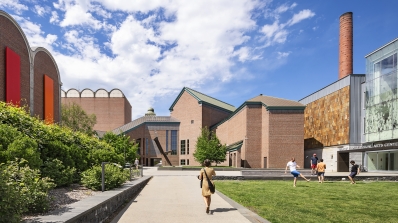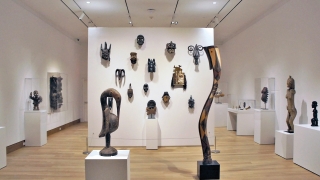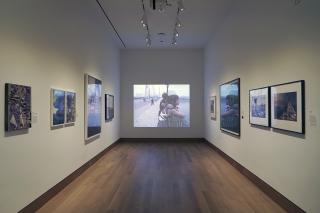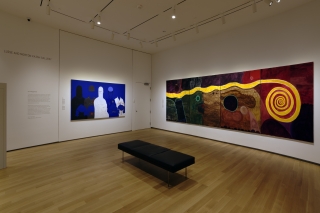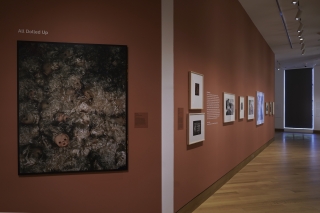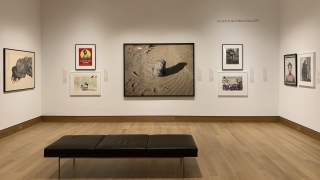Past Exhibitions
Contemporary Responses to Globalization
New LandscapesHumanity’s unceasing persistent consumption and development has had complex repercussions on the physical, social, and cultural landscapes around the world. Artists are actively engaging with the consequences of our impacts on the landscape and, in response, considering alternative realities—from imagining a transformed landscape or a dystopic future in the wake of ecological disaster to creating new worlds to escape the effects of industrialization. This exhibition of recent acquisitions reflects on the diversity of experiences in, responses to, and projections of our many lived and potential realities.
Dolls can be playthings—items which help us explore everyday life and fantasy—and objects of nostalgia. This selection of photographs features dolls in a variety of contexts, from domestic to uncanny. It includes work by photographers Hans Bellmer, Olivia Parker, Senzeni Marasela, Destiny Deacon, and Ralph Meatyard, among others
The prints in this exhibition reflect William Hogarth’s (1697–1764) pointed, shrewd, and satirical social and political commentary. His work appealed to a broad public, but this popularity prompted questions into the ethical issues around the production and distribution of prints, the right to profit from artistic labor, and the nature of what constitutes an original work of art.
Migrant Bodies and Latinx Identities
Los MojadosLos Mojados: Migrant Bodies and Latinx Identities highlights prints and photographs from the Hood’s collection that speak to the complexity of the US-Latinx experience. Ranging from migrant labor rights issues in the 1960s to the current Central American refugee crisis, these works explore an array of cross-cultural issues though an exploration of the body and accessible media. This exhibition seeks to insert Latinx art and culture into the greater historical narrative of the United States while encouraging viewers to rethink the boundaries of American art.
